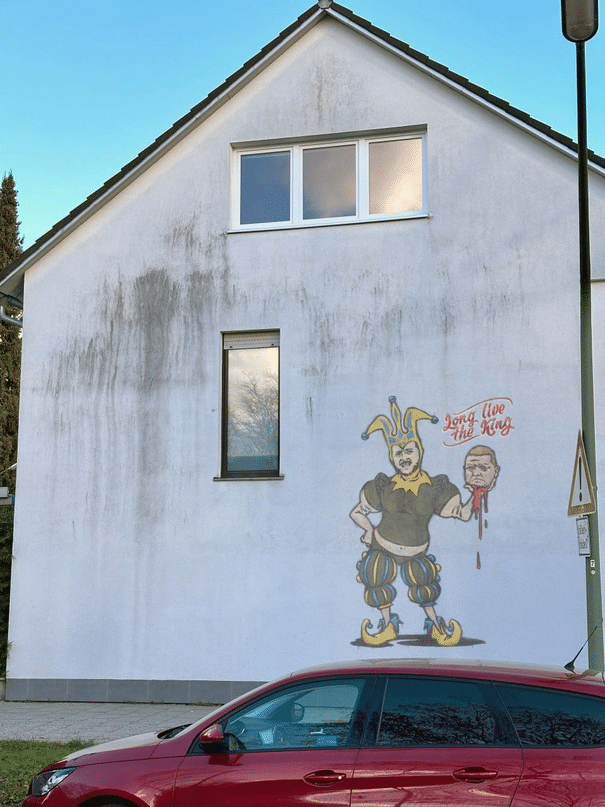The claim
A photo circulating online shows graffiti in Munich depicting Ukrainian President Volodymyr Zelenskyj in a jester's costume.
Our conclusion
Careful research and site inspections have shown that the alleged graffiti is a digital forgery. The mural does not physically exist in Munich, nor are there any advertisements or references to such a work of art.
The spread of fake images online is nothing new, but the political dimension of such fakes is increasing. In the current case, an image was manipulated to show non-existent graffiti in Munich depicting Ukrainian President Volodymyr Zelensky in a denigrating light.
The forgery is being used specifically to stir up anti-Ukrainian sentiment and influence political narratives. The fact that such images are shared unchecked underlines the need for critical media literacy in the digital age.
What is it about?
At the center of the controversy is an image circulating on social networks that allegedly shows graffiti in Munich. This graffiti purports to show Ukrainian President Volodymyr Zelensky in a jester's costume, a depiction apparently intended to discredit him.
In addition, Zelensky is holding the head of his former army chief in the picture, which further increases the provocation.

The claim that the graffiti came from Berlin artists has proven to be completely unfounded. In fact, the graffiti doesn't even exist.
Our rating
Fact-checking shows that the alleged graffiti is fake. A close examination of the location in Munich and the absence of any police reports or witness statements confirm that the image was manipulated.
The distribution of the image, especially in politically charged contexts, obviously serves to spread discontent and disinformation.
Facts about Zelensky graffiti
The detailed examination begins with the location: The photo is supposed to show a wall near the Giesing S-Bahn station in Munich.
A comparison with Google Street View from July 2023 shows that there was no graffiti on this wall at that time.
In order to verify later dates, the Munich police confirmed that no graffiti was reported in this area. Reporters from the German Press Agency (dpa) , who personally inspected the location, also found no evidence of the graffiti.
This thorough investigation exposes the photo as a fake and underscores the importance of verification in the digital information landscape.
questions and answers
Question 1: Does Zelenskyj's graffiti really exist in Munich?
Answer 1: No, the graffiti does not exist, it is a digital fake.
Question 2: How was the graffiti determined to be fake?
Answer 2: By comparing with Google Street View, missing police reports and direct on-site inspection.
Question 3: Why is this counterfeit problematic?
Answer 3: It spreads false information and can inflame political tensions.
Question 4: Have there been similar counterfeits in the past?
Answer 4: Yes, there have already been fakes that often conveyed pro-Russian or anti-Ukrainian content.
Question 5: How can you protect yourself from such counterfeits?
Answer 5: By critically questioning and checking sources before sharing content.
Conclusion
Checks clearly show that the alleged graffiti by Zelenskyj in Munich is a targeted forgery.
Such manipulated images often serve political purposes and can contribute to misunderstandings and conflicts.
Source: DPA
To protect yourself from disinformation and fakes, we recommend subscribing to newsletter Additionally, we offer monthly online lectures and workshops that help identify and understand misinformation.
You might also be interested in:
- Manure attack on embassy: Fake news exposed
- Deepfakes: Celebrities “promote” investment platforms
- Farmers' protest comes from Germany, not Texas
- Demo productions: satirical video exposes false information
- Climate change: 15 degrees heat in January 1974 (fact check)
- Discrimination on the slopes: A case of anti-Semitism
Notes:
1) This content reflects the current state of affairs at the time of publication. The reproduction of individual images, screenshots, embeds or video sequences serves to discuss the topic. 2) Individual contributions were created through the use of machine assistance and were carefully checked by the Mimikama editorial team before publication. ( Reason )

